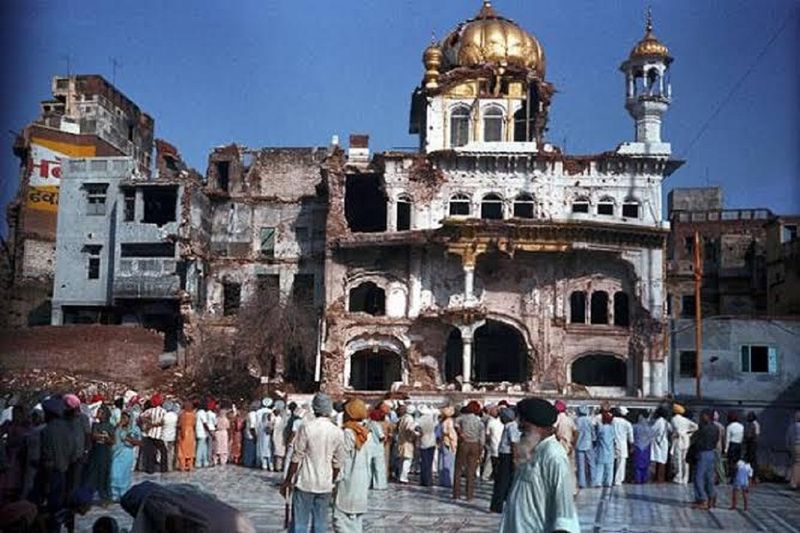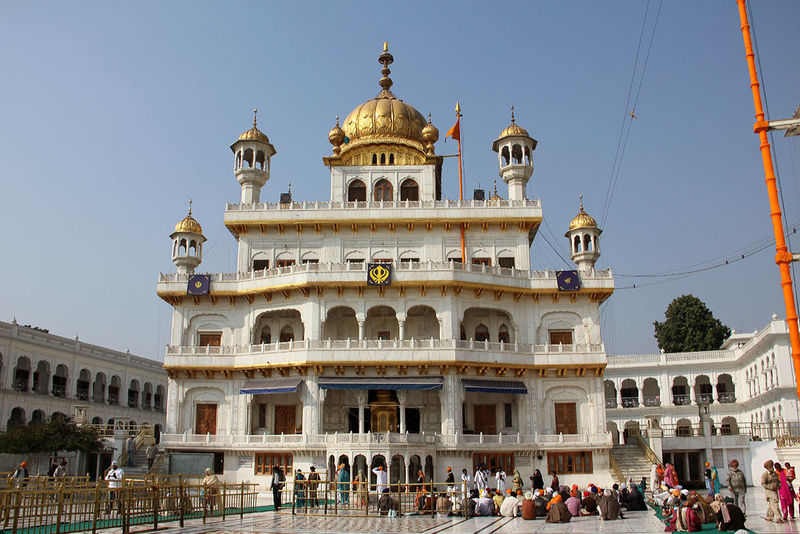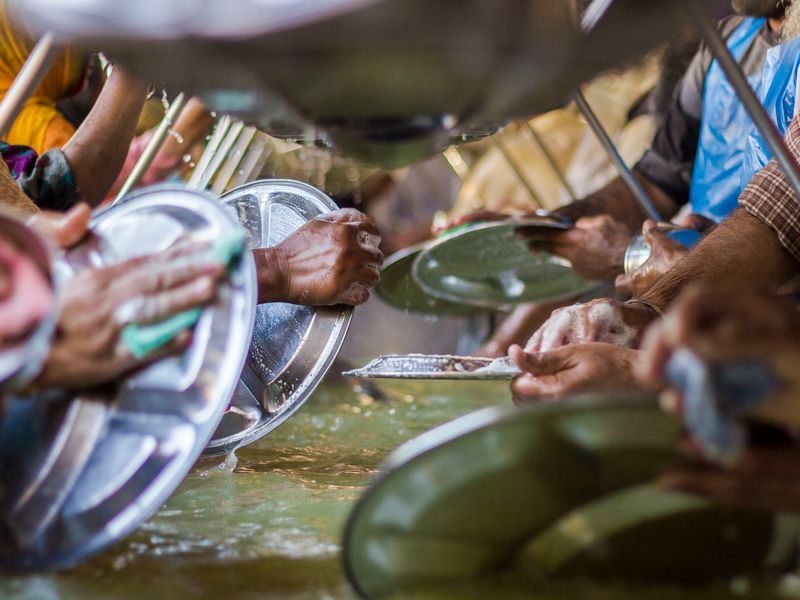
Akal Takht Amritsar: The Highest Seat of Authority in Sikhism
Home > Amritsar > Akal Takht Amritsar: The Highest Seat of Authority in Sikhism
When in the city, visit to Golden Temple is a must to make your trip successful. A place so beautiful, inside and outside, that it is recommended to include this holy place in your Amritsar itinerary and you can also get cheap hotels near golden temple. Even if not a follower of the religion, come here to experience the calm and peaceful atmosphere.
Within the premises of Golden Temple, lies the Akal Takht which is regarded as another important religious place in Sikhism. This highly respected place of worship was the news highlight during Operation Blue Star back in 1984.
Let’s get to know more about Akal Takht Amritsar and understand its importance in the religion.
What is Akal Takht?
Akal means "Timeless," and takht refers to "throne." Akal Takht, which in Sikhism refers to the "Throne of the Immortal," is regarded as the highest of the five takhts.
At a walking distance from the Jallianwala Bagh and in front of the causeway leading to the Golden Temple in Amritsar lies the majestic structure named as the Akal Takht. Standing on the Golden Temple ground, it is the Jathedar's location (spokesperson of Sikhs). The Jathedar of this place is the Sikh Panth's top spokesman and is intended to be a spiritual leader independent of any outside, politically-driven influences.
Originally known as Akal Bunga, this building functions as a court of law for civil and non-spiritual disputes. White marble was used in the building's architecture, while gold leaf was used to coat the dome. As a sign of respect, it is constructed at a lower height than the Golden Temple.
Deemed as Sikhs' highest political institution, the Akal Takht may express its gratitude for exceptional services provided or sacrifices made by people who support Sikhism or the cause of the Sikhs. Notably, no individual has authority higher than the Akal Takht.
The History of the magnificent Akal Takht

The Sikh history mentions that Guru Arjan Dev strongly resisted converting to Islam and the Mughal authorities saw it as a disgrace. Following an order by the Mughals that the Guru be tortured in the cruellest way possible, he offered himself as a sacrifice for righteousness on May 30, 1606. The son and successor of Guru Arjan Dev, Guru Hargobind (1595–1644) started out sporting two swords, one of which stood for spiritualism and the other for materialism (temporality).
On June 15, 1606 (observed on 2 July today), Guru Hargobind laid the foundation of the most important religious centre in Amritsar, Akal Takht from where the Sikh community's spiritual and material issues could be addressed.
In the year 1609, with the assistance of Baba Budha Ji and Bhai Gurdas, the Sixth Guru of Sikhs Guru Har Gobind Sahib Ji constructed the greatest temporal seat of Sikhism.
The panth (community) constructed four more takhts throughout the past century:
Sri Keshgarh Sahib: In Anadpur Sahib, Punjab
Sri Patna Sahib: In Patna, Bihar
Sri Hazur Sahib: In Nanded, Maharashtra
Sri Damdama Sahib: In Talwandi Sabo, Punjab
Guru Hargobind Ji, Bhai Gurdas Ji, and Baba Buddha Ji created the Akal Takht Amritsar with their own hands. No other craftsman or individual was hired to construct the platform.
Guru Gobind Singh appointed Bhai Mani Singh to oversee the Harmandir and the Akal Takhat in the year 1699. Since its origin, the takht has served as the main gathering place for the neighbourhood. Ahmad Shah Durrani demolished the structure in 1762. However, the Sikhs reconstructed the Takht in 1765 at the first-ever Sarbat Khalsa. The first level was built by the Sikh sangat in 1774 and Maharaja Ranjit Singh constructed the next five stories. Gold was used to adorn the unique structure of the Akal Takht and was funded by Maharaja Ranjit Singh's general Hari Singh Nalwa.
Ahmed Shah Abdali and Massa Rangar, in the 18th century, launched many attacks against the Akal Takht and Sri Harmandir Sahib.
The Harmandir Sahib was constructed slightly higher than the Akal Takht, suggesting a hierarchy in which the pursuit of spiritual grace always came first. The guru gave the Sikhs hukamnamas (orders) from . Sikhs have received directions and explanation on beliefs and tradition through these hukamnamas.
Operation Blue Star
Throughout Operation Blue Star in June 1984,the sikh architecture sustained significant damage. The structure was built twice, first by the Indian government and then by the Sikh panth using karseva.
Many Sikh organisations felt that the Takht should not have been rebuilt using government funds. As a result, when Sarbat Khalsa resolutions were approved, Baba Thakur Singh who was Bhindranwale's successor from Damdami Taksal, ordered the Akal Takht to be destroyed and rebuilt in 1986.
Akal Takht at Present

Recommended as one of the top historical places to visit in Amritsar, the Akal Takht is a popular attraction for tourists receiving thousands of visitors every day.
Even today, important decisions affecting Sikhs' politics are made at Akal Takht Amritsar. Since its beginning, the takht has served as a forum and a tool for determining the socio-religious and political fate of the Sikh people.
The Akal Takht Amritsar stands for the administration of justice and worldly activities, while Sri Harmandir Sahib represents spiritual instruction. The Guru Granth Sahib is stored in Sri Harmandir Sahib during the day and Sri Akal Takht Sahib at night.
The construction of Akal Takht is such that while seated in the Golden Temple, one cannot view Akal Takht Sahib; whereas if seated in Akal Takht Sahib, one can plainly see the Golden Temple. This represents the idea that even when engaging in political and social activities, one should never forget about God.
The structure played a vital role in the history of Amritsar and still stores some well-known artifacts as listed below (and many more):
Swords of Guru Hargobind Sahib representing Miri and Piri
Sword of Guru Gobind Singh Ji
Sword of Baba Buddha Ji
Guru Hargobind Sahib's kirpan
Baba Ajit Singh's Katar
Baba Deep Singh Ji Shaheed’s pistol
The Daily Ritual
The holy Guru Granth Sahib is set to rest every evening at 9.30 p.m., when a golden palanquin carries the book from the Golden Temple to the Akal Takht (considered as the resting place). During the ceremony, all male pilgrims and visitors have the chance to actively participate in the worship of the sacred book. Sikh Gurus and pilgrims bring the book back to the Harmandir Sahib for prayers before the sun rises, at about 4.30 am every morning. It is known as the Palki Sahib ritual and occurs twice every day.
Things-to-do at Golden Temple/Akal Takht
Seva

Locals and pilgrims both participate in a lot of sewa, or charitable activity. The duties of maintaining and cleaning the temple as well as cooking and serving the food to everyone without difference are carried out by volunteers who contribute their services for free.
If not in the kitchen, devotees help out with cleaning or in the shoe stores at the entrance. This can be done by doing the dishes, serving dinner or helping in the kitchen.
Langar

Following their visit at the Golden Temple and Akal Takht Sahib, Amritsar, hundreds of pilgrims eat in a sizable eating area called Guru-Ka-Langar. Numerous volunteers make the meals in what is usually referred to as the “largest free kitchen” in the world, which serves free meals to people of all religions and beliefs. Without any type of distinction, all devotees dine together while seated in rows on the floor.
Connectivity to Akal Takht Sahib, Amritsar
The captivating beauty of the grandeur religious and historic structure attracts millions of visitors every year globally. One can reach the Akal Takht in amritsar via road,air or rail.
The nearest airport to Akal Takht, Amritsar is Sri Guru Ram Dass Jee International Airport which is at a distance of 13 Kms .
As far as the railway system is concerned many trains run from different parts of the country like the special Akal Takht express running from Kolkata to Amritsar via a number of cities. Visitors can also board a bus or hire a cab to reach their chosen destination.
As understood by now, the Akal Takht Amritsar is the highest Takht (or seat) for the followers of Sikhism. The traditions and culture it holds are captivating. You can spend a whole day here just breathing in the serenity of the place or move on to Gobindgarh Fort as your next stop, which is only 10 minutes away from here.
Step out of the temple premises to have an authentic Punjabi meal nearby. Since the city loves food, there are ample restaurants in Amritsar ensuring you never go hungry.
Get In Touch With Our Travel Expert